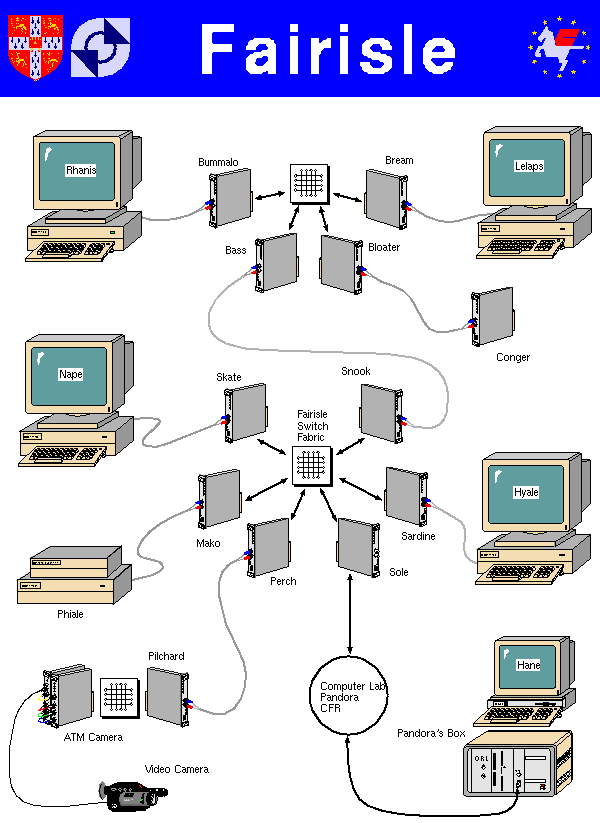 A follow-on to Fairisle
A follow-on to Fairisle
The Blue Book contains documentation on the hardware and software associated with the fairisle project.
 A follow-on to Fairisle
A follow-on to Fairisle
Achievements of the BT Project
The flexibility of the Fairisle platform and the representative range
of ATM traffic sources available for the experiments are described in
some detail. The experimental programme carried out to date is
described in detail, as are the performance measures of interest and
the specific traffic control mechanisms being investigated. Some of
the experimental results are also presented. We conclude with a
discussion of the scope for future collaborative work between these
two groups and the problems which remain to be addressed.
CDV in ATM networks: Peformance Results from the Fairisle ATM Testbed
Current concern with the problem of cell delay variation (CDV)
experienced by connections which traverse an ATM network arises from
the need to provide guarantees on loss and delay for traffic with real
time constraints. This study uses the Fairisle ATM LAN to measure the
CDV experienced by constant bitrate (CBR) reference connections which
traverse an ATM network and mix with different types of background
traffic, including Bernoulli, VBR video and LAN interconnection data
traffic. The results are compared with those of other practical
studies and with theoretical models.